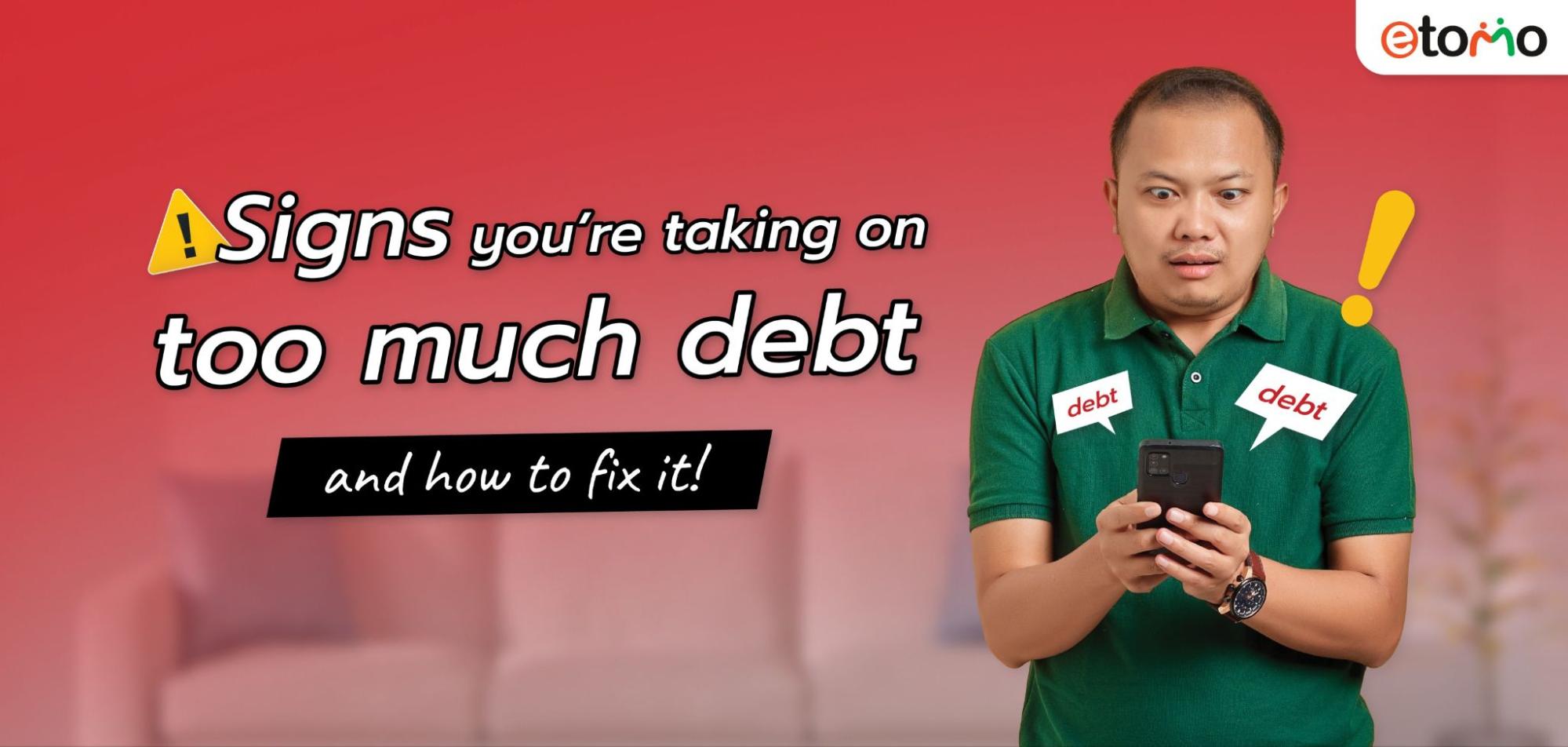Many people accumulate excessive debt due to a combination of lifestyle choices, lack of budgeting, or unforeseen emergencies. While debt can be a useful tool when managed wisely, such as for purchasing a home or funding education, too much debt can lead to financial stress, anxiety, and difficulty achieving long-term financial goals. It’s crucial to recognize the warning signs early so that you can make adjustments before your financial situation worsens.
Warning signs you’re taking on too much debt
Understanding the indicators of too much debt is the first step toward addressing the issue. Here are several red flags that signal you may be over-leveraged:
- Struggling with minimum payments: If you find that meeting just the minimum payments on your loans is becoming increasingly difficult, it’s a clear sign that you may be carrying too much debt. Minimum payments are designed to be affordable, but when they become a stretch, it’s often because the total amount owed is too high relative to your income. This can lead to mounting interest charges and an extended repayment period.
- Relying on new loans to pay old ones: If you’re taking out new loans or using credit cards to pay off existing debt, you might be caught in a cycle of borrowing that could quickly spiral out of control. This is often referred to as “debt consolidation without a plan” or “debt cycling.” It can create the illusion of managing debt, but it only adds more financial pressure and doesn’t address the root cause of the problem.
- High debt-to-income ratio: One of the most critical financial ratios is the debt-to-income (DTI) ratio, which compares your monthly debt payments to your gross monthly income. If a large portion of your income is being consumed by loan repayments, it may be time to reassess your borrowing habits. A high DTI ratio means you may be over-burdened with debt and could face difficulties covering living expenses, savings, or investing in the future.
- Constant financial stress: Feeling overwhelmed or anxious about your finances is a significant sign that you’re carrying too much debt. If debt-related stress is affecting your overall well-being, your relationships, or your mental health, it’s time to take action. Constantly worrying about paying bills or meeting deadlines can drain your energy and distract from other important areas of life.
- Using debt to maintain lifestyle: Taking on loans to fund a lifestyle beyond your means is another red flag. While it may seem tempting to keep up with peers or maintain a certain image, relying on credit for everyday expenses, entertainment, or non-essentials can lead to financial instability. Living beyond your means is a recipe for long-term debt issues.
How to Fix It: Steps toward financial recovery
Once you’ve identified the signs of excessive debt, it’s time to take action to regain control of your finances. Here’s how you can fix the problem:
- Reduce expenses: The first step in addressing excessive debt is to cut back on non-essential spending. Create a detailed budget that tracks all income and expenses, and look for areas where you can make adjustments. Consider eliminating subscriptions, eating out less, or downgrading services. These small changes can free up extra funds to put toward paying down your debt.
- Create a repayment plan: Once you’ve reduced your expenses, the next step is to develop a clear and achievable debt repayment plan. Focus on paying off high-interest loans first, or consider using the debt snowball method, which involves paying off smaller loans first to gain momentum. Having a clear plan in place gives you a roadmap for getting out of debt and achieving financial freedom.
- Seek professional financial advice: Sometimes, excessive debt can be overwhelming, and it may be difficult to know where to start. In such cases, seeking professional advice from a financial advisor, credit counselor, or debt management expert can help you navigate the path to financial recovery. These professionals can offer personalized guidance, negotiate with creditors, and help you create a strategy to pay off your debt more effectively.
- Consolidate your debt: If you have multiple high-interest debts, consolidating them into one loan with a lower interest rate may be an option. Debt consolidation can simplify your payments and lower your overall interest costs, making it easier to pay off your debt in a more manageable way. However, be sure to weigh the pros and cons of consolidation to ensure it’s the right choice for your situation.
- Build an emergency fund: One of the key reasons people fall into debt is the inability to cover unexpected expenses. Building an emergency fund can provide a financial cushion and prevent you from relying on credit cards or loans during emergencies. Aim for at least three to six months’ worth of living expenses in a readily accessible savings account.
Too much debt can be a serious threat to your financial health and peace of mind. However, by identifying the warning signs early, such as struggling with minimum payments, relying on new loans to pay off old ones, or carrying a high debt-to-income ratio, you can take proactive steps to regain control. Reducing unnecessary expenses, creating a clear repayment plan, and seeking professional financial guidance are all critical steps in overcoming excessive debt. By addressing the issue before it worsens, you can regain financial stability, reduce stress, and work towards building a secure financial future.






